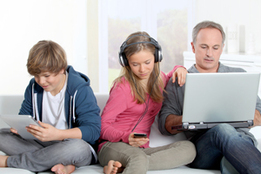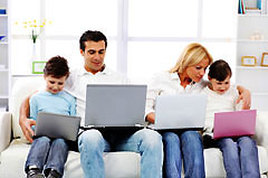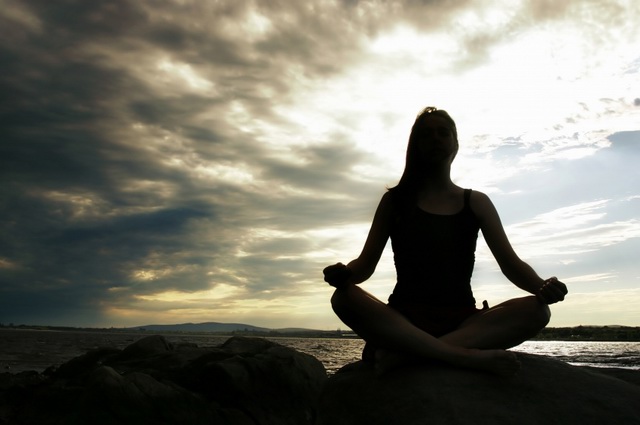 Family time, circa 2014 Family time, circa 2014 Screen time: it's something all families find themselves doing these days. In my play therapy sessions, tweens and teens love to show me their newest creations on Minecraft and trending Youtube videos. The way I see it, there is nothing inherently wrong with spending time as a family playing on devices. The internet and video games connect us in new ways. The problem is that it's all too easy to get lost in the screen. Subtle tension, anxiety, stress, and distraction are the results of losing ourselves in the screen. This is what our kids feel too when they have too much, even if they can't articulate it. So if we are stressed, distracted, and disconnected how can we bring the caring presence and attention to our families that we need in order to have harmony at home? When both we and our children are coming from a place of disconnection fights can easily erupt and everyone feels depleted.
It all starts in the body. The more awareness you have of your living, breathing body the more access you have to your prefrontal cortex and to higher level thinking, planning, and impulse control. You are more grounded, even amidst surprises and stresses, and able to choose your responses, rather than react. With adults body awareness usually starts with feeling the breath. Can you feel yourself breathing even as you read this? The breath naturally sipping in and flowing out, without any conscious effort on your part. Even as whatever else is happening around you happens, you can attend to this basic body function to stay centered in your deeper self, more relaxed and in control of your reactions. Connecting to the experience of your body or breath as you use your device can completely change what happens when it's time to get off it. The same result happens from attending to any part of the body. Try it yourself. As you read this can you feel your arms, can you sense the back of your skull, and allow it relax just a little? Can you feel your fingers as they scroll or rest? That forward and upwards tension we create when we attune to what we are doing outside of us, especially when it is mental (which most screen activities are) relaxes, and we find ourselves in our our selves again, relating to the screen, not lost in it. So the next time you are sitting with your family having some screen time try this: announce that today as everyone uses their devices they will choose one body part or the breath to feel at the same time as they have screen time. Periodically look up from your device and nonchalantly ask, "Can you feel your arms?" or "Do you notice your breath?" Let the question be an invitation, a gentle reminder, rather than anything actually needing a response. Then afterwards ask how often they were able to feel their fingers (or whatever body part they choose). Do this daily for one month, and you will not only find that you are in your own body more and less reactive, but you will notice that you will become more aware, less stressed and more alive every day. At first you may find you immediately forget to feel as you are on your screen, or that it is hard to focus on the body and the task at the same time. Like learning to play the piano with two hands, it takes time and consistent practice to build a new habit like this. With each repetition of trying to feel the body while on the screen you are helping yourself and your children grow and strengthen a neural network that supports self-regulation and centeredness in the body. Make this simple change and start a new habit that supports attention and connectedness.  So... what part of your body or breath are you going to feel during screen time today? Make of note of it in your calendar now. Go ahead, even set a reminder. Repeat daily for one month and see what shifts happen in you and in your family.
0 Comments
Leave a Reply. |
AuthorKaren Wolfe, MFT is a psychotherapist in San Francisco and the East Bay. She is passionate about helping children and families thrive and has particular expertise with children with exceptional learning and sensory styles. Archives
August 2016
Categories
All
|
|
2354 Post St, Suite B,
San Francisco, 94115 |
3655 Grand Avenue,
Oakland, CA 94610 |
Greenwood Court,
Orinda, CA 94563 |


